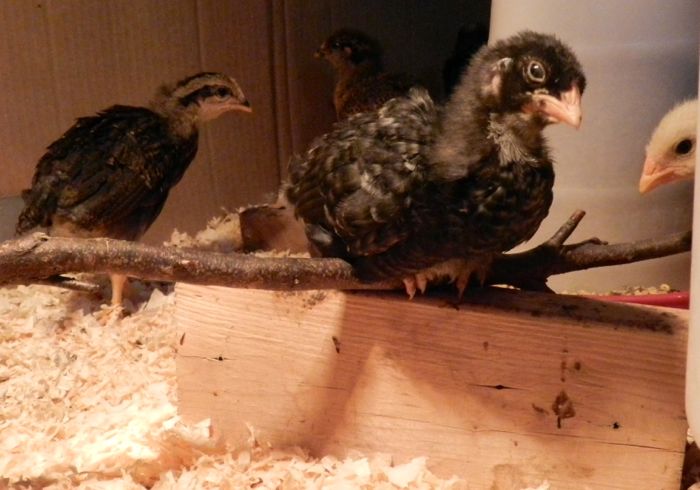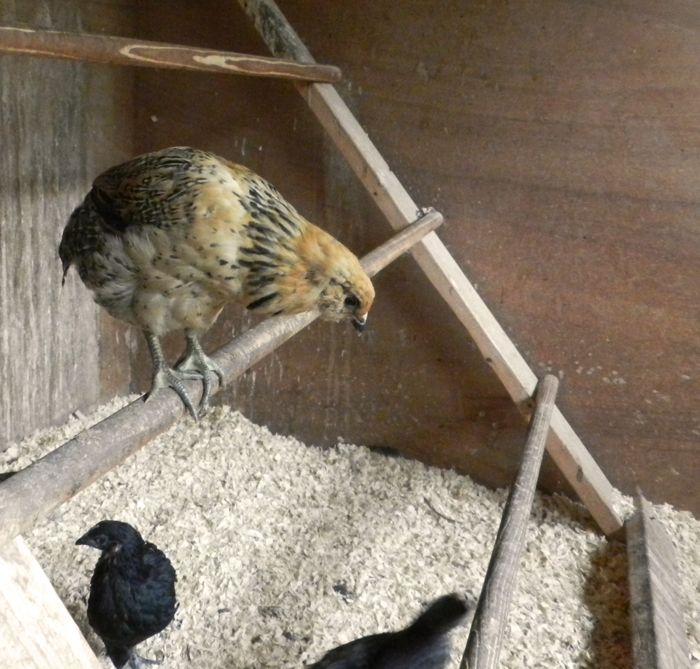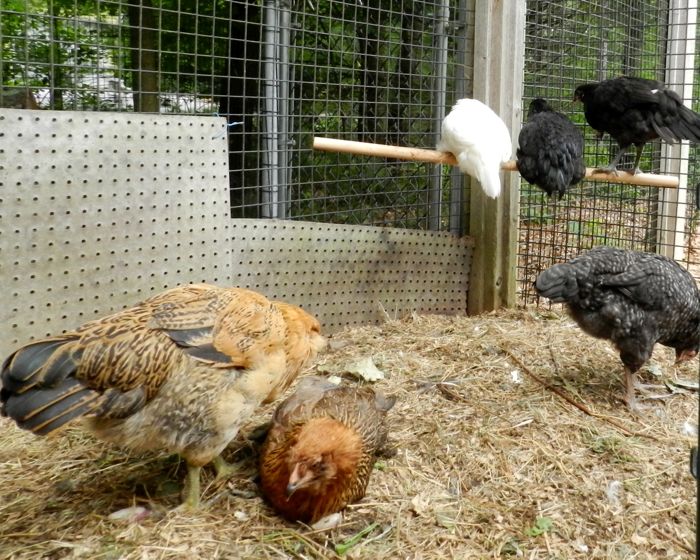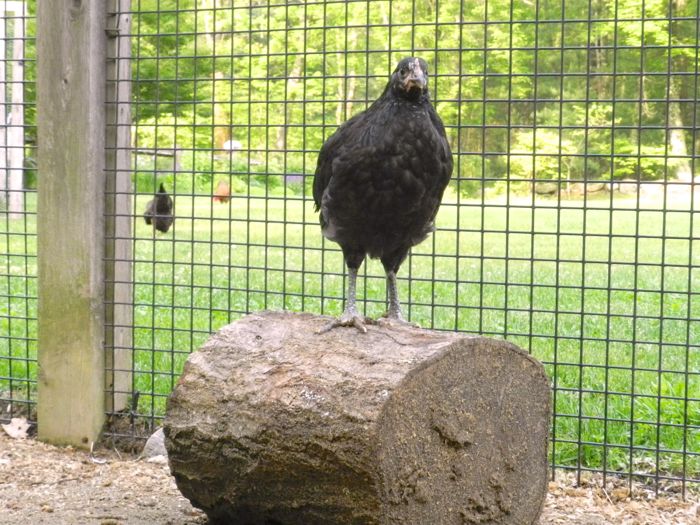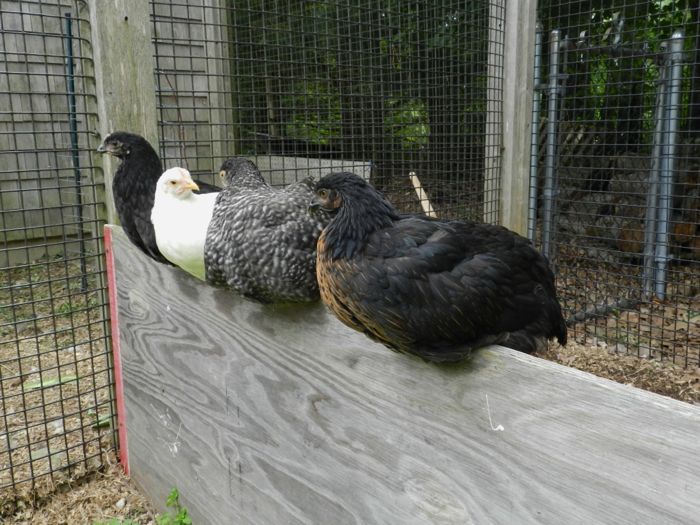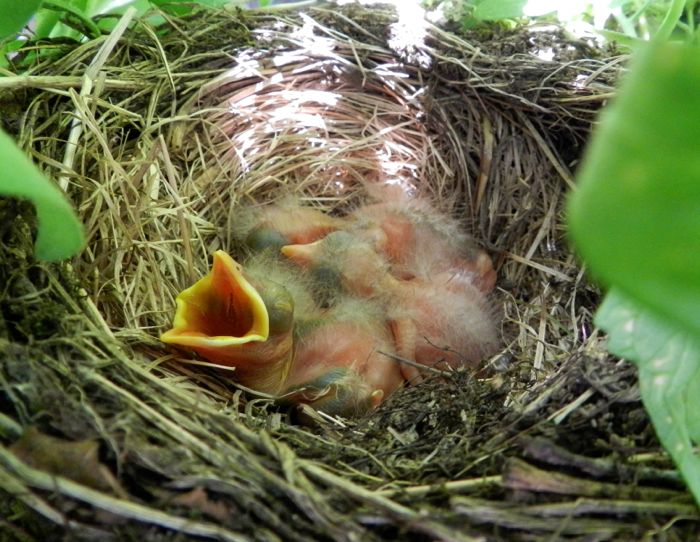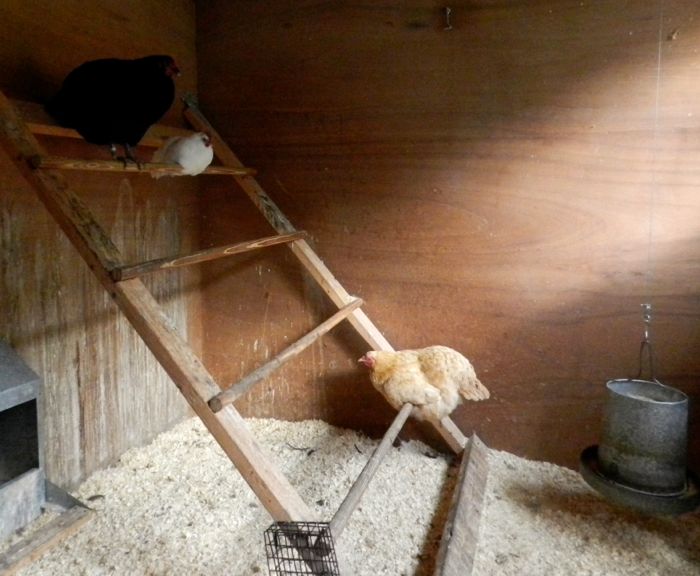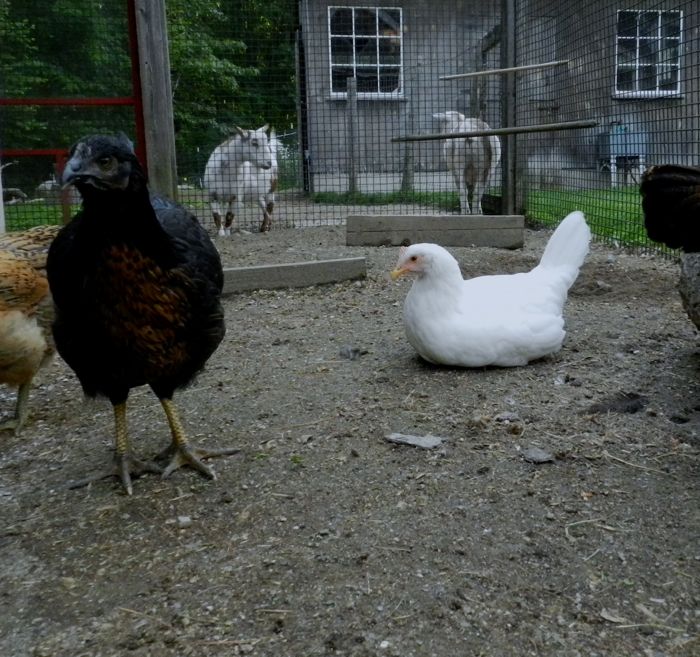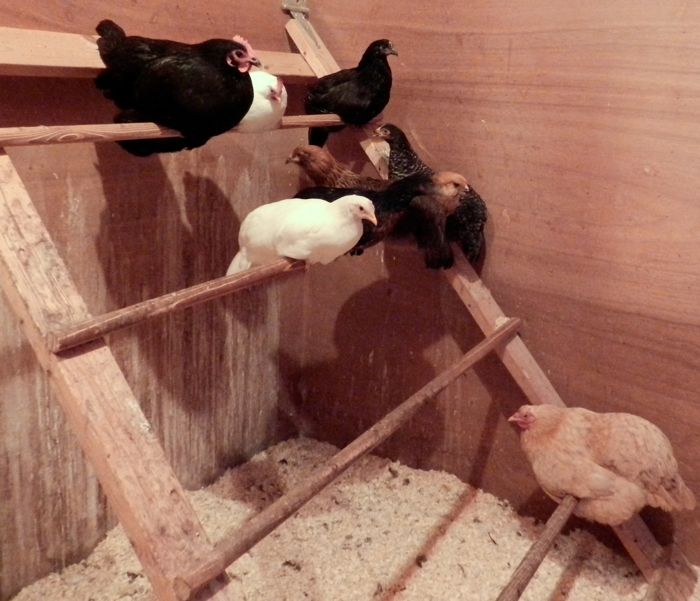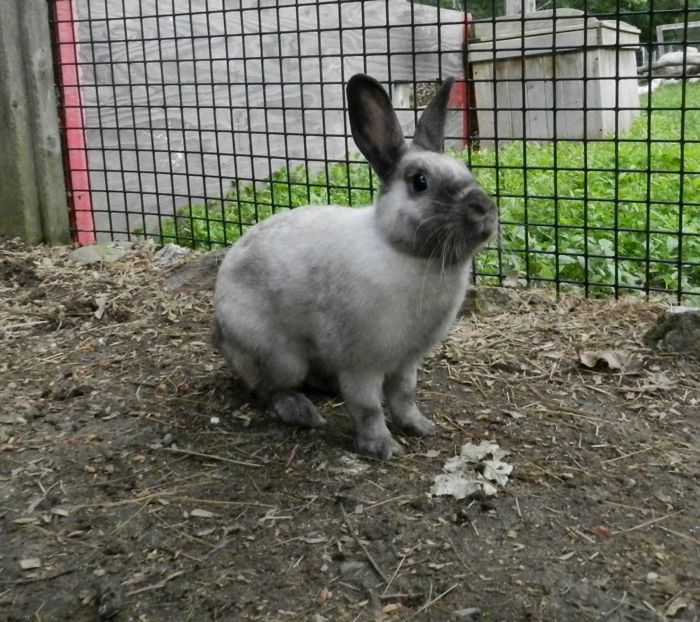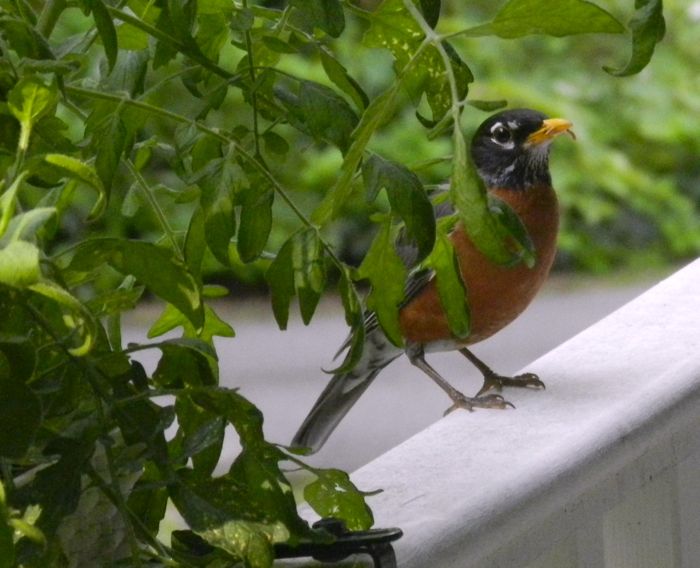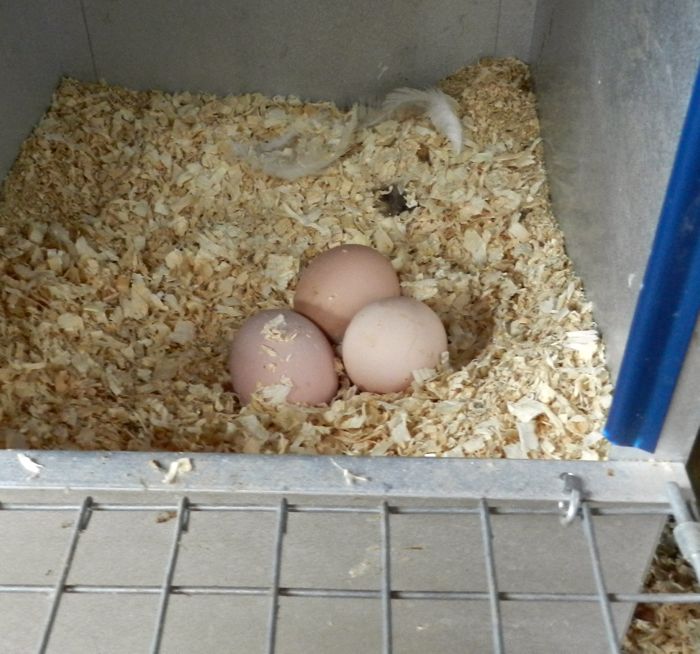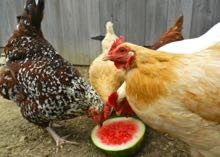From the comments, both in private emails and on the last post, it was clear to me that more needs to be said about roosting behavior for young chickens. Why won’t your pullets go into the coop at night, get up on the roosts to sleep like they’re supposed to?
Chickens naturally want to roost (unless they’re Silkies or heavy meat hybrids). Encourage this when they are very young. Here my 3 week old chicks are getting up on their “training roosts” and learning to balance and nap off of the ground.
Give the chicks a chance to explore the coop without old hens there to hassle them.
Once the chicks venture outside, you should provide roosts for them in their pen.
Although, they’ll also find other things to get up onto.
Given the opportunity, your pullets will find places to roost, whether designed for them, or not.
By the time they are feathered out and no longer need a heat lamp, they’ll want to roost at bedtime, too. If not, read yesterday’s post. Add to that list mites – these blood-sucking minuscule parasites live in the woodwork during the day, but come out at night. When the infestation is bad you’ll see them crawling on the roosts and on your birds. They can make your chickens’ lives miserable. I haven’t experienced it here, so I don’t have a FAQ for you, but I can tell you that you’ll have to thoroughly disinfect the coop, use chemicals on your birds, paint to seal the wood, and possibly redesign the coop to rid it of these pests.
But, I think that for most of you, if your pullets are showing normal roosting behavior outside of the coop, and yet you’re still not seeing them roost at night, you either have badly designed housing, or your older hens are intimidating the young ones, or there’s a combination of the two.
As mentioned yesterday, the coop should be inviting. It should have cool, fresh air, windows for light, and enough space to generously accommodate your flock. Space is often the key. Old hens do not want the youngsters on their turf. They don’t want to sleep next to them. They will not play “nice.” Expect that and design for it. Have roosts at different levels. Have more than 6 inches of bar space per bird. Have enough floor space so that the pullets can avoid the domineering hens by scooting around them. If a hen can block all access to the coop, or pin a pullet in a corner, then the coop is too small for your flock. If you have one truly mean hen (think Edwina when she was young) then remove her for a few days to give the youngsters time to become confident in their new surroundings.
If you don’t have old hens scaring the pullets, and they still aren’t roosting, you might be rushing things. They don’t start roosting until they no longer need the heat lamp. They don’t all start roosting at night until about six weeks of age. By ten weeks they should be up on the poles. The few laggard can lifted up and set next to the rest of the flock, and they’ll catch on quickly to the routine.
Chickens might seem dim-witted, but they do what they do for their own good reasons. It’s your job to figure out what those reasons are. It’s not complicated, but you do have to see the world from a chicken’s perspective.
